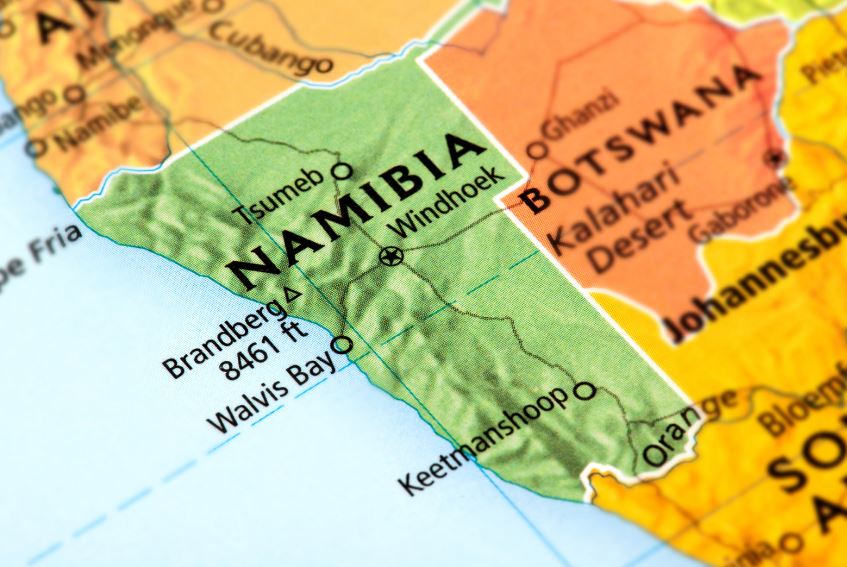Green hydrogen has become a significant buzzword in the African country since European and Asian countries began searching for climate-friendly industrial solutions. The now-deceased Namibian President Hage Geingob heavily promoted the establishment of a hydrogen economy in his country.
Europe and Asia’s Support to Namibia
Now, primarily European and Asian countries are accelerating their efforts. The EU announced the signing of several programs to promote the transition to clean energy and the new industry in Namibia, a country of three million people in southern Africa. Recently, however, there has been a lot of criticism of the plans. Many Namibians, unclear on the benefits and implementation, describe it as a “hype.”
EU Perspective on Green Hydrogen
Green hydrogen, produced using renewable energy, has the potential to be a “game-changer,” said EU Energy Commissioner Kadri Simson at the conference. The development is moving in the right direction. “It is a great opportunity to combat climate change while simultaneously creating jobs in Namibia.” Michael Kellner, Parliamentary State Secretary at the German Ministry of Economic Affairs, announced further support for the Namibian government beyond existing pilot projects. “The ultimate goal is to defeat fossil energy sources with the help of sun and wind.” Conference speakers emphasized that it is about exporting green hydrogen and building a downstream industry in Namibia. It is a partnership for mutual benefit, said Kellner.
Production Costs and Export Potentials
In Namibia, green hydrogen can be produced “extremely cheaply” due to optimal solar and wind energy generation conditions, said Rainer Baake, the German government’s special envoy for the German-Namibian climate and energy cooperation. Green hydrogen is more expensive than gray hydrogen, which is produced from natural gas. “But this will change very quickly in Europe. We have no alternative but to switch to climate-friendly industries. If we want to maintain these crucial economic sectors, importing these raw materials cheaply makes economic sense.”
European Demand for Green Hydrogen
This particularly applies to the ammonia industry, other chemical sectors, and the automotive industry. Europe, Japan, and South Korea can only meet half their green hydrogen needs through domestic production and rely on various international suppliers.
Hyphen’s Green Hydrogen Project
The greatest focus is currently on the Hyphen consortium’s project planned in Namibia’s Tsau/Khaeb National Park, the so-called Diamond Restricted Area near Lüderitz. A total investment of $10 billion is planned over two development phases, nearly equivalent to the country’s economic output. Hyphen, involving the German renewable energy provider Enertrag, has announced the creation of 15,000 jobs during the construction phase and 3,000 permanent jobs.
Project Timeline and Infrastructure Needs
Construction is set to begin in January next year, with green hydrogen production starting in 2029. The hydrogen will be processed and exported to Namibia for ammonia production. Massive solar and wind systems, an electrolyzer, pipelines, and an ammonia factory are planned alongside nearly all infrastructure, including roads, a new deep-water port, and a seawater desalination plant.
German-Namibian Projects
About ten projects by German companies or with German government support are planned in Namibia. The most advanced is the HyIron/Oshivela project, Africa’s first green ironworks, which received a federal subsidy of 13 million euros. A machine for ore reduction, built in Germany, is set to arrive in Walvis Bay by ship in a few days. Production is scheduled to start by the end of the year.
Financing and Local Perspectives
Baake said the Namibian government must also present itself as a stable location to realize the projects. “The main problem of all projects is funding and capital costs.” Additionally, international customers need to sign purchase contracts. “Everyone knows that Europe cannot produce in a climate-damaging way in the future, but many are still waiting because gray hydrogen is cheaper.”
Environmental and Economic Concerns
In Namibia, however, critical voices are loud. An umbrella organization of environmental groups protests against the Hyphen project, located in a national park with extraordinary plant diversity. The Diamond Restricted Area is usually only accessible with special permits. The German government would never allow such a project in a national park, says the association’s head, Chris Brown. Can the generated hydrogen be called “green” if potentially significant damage to Namibia’s biodiversity and national parks could occur? The project should be halted until extensive environmental reviews are complete. Hyphen emphasizes significant efforts to minimize environmental impact.
Economic Skepticism
Some economists are also skeptical. Namibia’s economy is growing strongly, but only a small portion of the population benefits, said Salomo Hei, chief economist at Namibian research institute High Economic Intelligence (HEI). Even for simple tasks, skilled workers are lacking for technically advanced new industries. “We are going far beyond our means here.”
Namibia’s Economic Focus
For the government, inclusive economic growth should be the priority to fight poverty and high youth unemployment. “It’s about improving Namibians’ living conditions now, not in the distant future.” The government should rather support sectors like agriculture, trade, and basic infrastructure development to create easily accessible jobs for the broader population. More than half of young people are unemployed. The country is currently experiencing the worst drought in 100 years. The government plans to cull hundreds of wild animals soon to help hungry and malnourished people.
Risks of Government Involvement
The economist added that state participation in hydrogen projects carries risks. For the Hyphen project, for example, the state is supposed to hold a 24 percent stake, with developmental banks likely offering loans at preferential rates. “It would be catastrophic if Namibia goes into heavy debt and the projects ultimately fail.” The pressure to advance the hydrogen economy mainly comes from Europe. “Namibia has never attracted so much attention before. This is an opportunity, but we must focus on sustainability and not rush ahead too quickly.”





